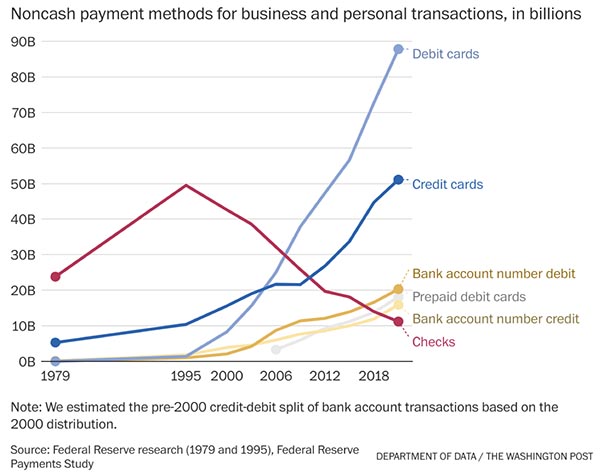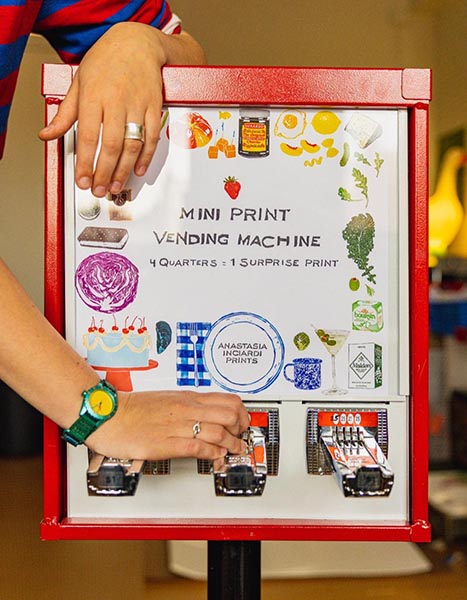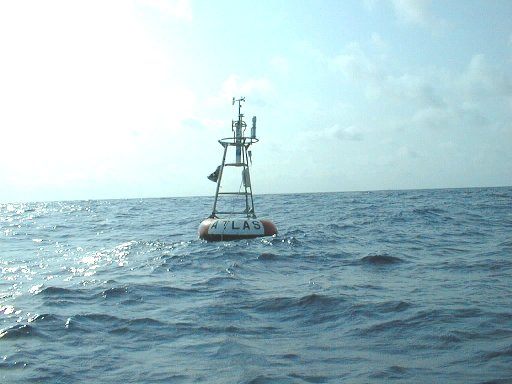Typeface Trolls
Here’s a new online threat for designers: typeface trolls. Via Boing Boing, apparently users who access fonts via Adobe’s font platform are being threatened by a foundry claiming that they are owed money, via the longtime practice of copyright trolling.
We have used the font Proxima Nova on a website for our client using the Adobe Web Project method. Our client is now being harassed and threatened by a company called The Type Founders who claim to work on behalf of the owner of the font (who we believe are legitimate). They are claiming that we have illegally downloaded the font Proxima Nova, and are incorrectly using it by “self hosting.” We have access to this font through Adobe Fonts, and are using it on this website through Adobe Web Project (as mentioned). This company are claiming that we need to purchase the font in order to continue using it. Just to note, since this issue arose we have removed the font temporarily until the matter is resolved.
Innocence is irrelevant, because either way it would likely cost more in legal fees than to simply pay the errant fine. (That’s how copyright trolling works.)
Adobe appears to be silent on the issue, which seems unfair.
Whether a shameless scam as described here, or Adobe (or Google, or whoever else) not really having the rights to the fonts it makes available to customers, or absurd fine print to the effect of “your clients must also have the same zillion-dollar subscription to this platform that you do,” the shakedown troll is in play in font-land. If a font platform does not indemnify you outright, you are vulnerable to the “$400 to us now or $4000 to your lawyer when we sue you” trick.
And, no typefaces cannot be copyrighted, but:
their implementation as font files pass muster as computer programs and the whole point of the troll business model is that it’s so expensive to prove you’re legal.
So be careful when using fonts. Or go back to handset metal type.
Check That…
Our Mount Monadnock Media Maven checks in with a story about…checks. Or, that is, who still uses them. Via the Washington Post, they are going the way of the landline and the fax machine:

They add:
As recently as 2003, the Federal Reserve ran 45 check-processing locations in which brigades of workers routed each check. A decade later, it was operating just one, in Atlanta, as check usage fell and the Fed executed a long-planned transition to a largely electronic system. The checks were also processed faster, meaning even fewer of them were, as the cliché went, in the mail.
And if you’ve been to the supermarket, you know who is using them.
As a rule, age predicts check usage: Three-quarters of retirement-age Americans still use checks, compared with fewer than a tenth of their college-age comrades. It’s also higher among those with more education and higher earnings, regardless of age.
And, interestingly, they are used for some kinds of businesses more than others.
In particular, we still reach for the old checkbook when dealing with contractors, charities, taxes and landlords. But you may encounter some furrowed brows if you hold up the line in Safeway or Taco Bell to painstakingly spell out “sixteen dollars and forty-four cents” — data shows that almost nobody uses checks for groceries, fast food or transportation anymore.
It also bears mentioning—at least from our experience—that some banks’ online payment systems cap transactions at an often ridiculously low amount, so sometimes paper checks are the better option. And sometimes one’s online bill payment actually does send a paper check—just from the bank. Still, we expect that paper checks are not long for this world.
But what about cash?
As recently as 2017, cash was still king. The following year, it was usurped by the debit card. And then covid-19 hit and made us all a little more reluctant to meet in person and pass objects back and forth. Now cash is used far less frequently than it was just five years ago.
The trouble is, once we go completely cashless, we are less sensitive to what things cost, and vendors can charge whatever they want, as anyone who has ever been to a sports arena’s concession stand can attest to.
Realm of the Coin
Remember back in 2020 when, during the COVID lockdowns, there was a coin shortage? No? Well, there was, and for those who needed quarters to do laundry, it was a challenge. But, via Print magazine, necessity is the mother of invention and Maine printmaker Ana Inciardi found a way to glean quarters so she could do laundry (one downside of having an in-home art studio is that ink gets everywhere): an art vending machine.
She outfitted a prototype with a few small linocut prints she had yet to frame, cut them down to size, and reverse-engineered the machine to dispense the works when she slid in some coins. While Inciardi did a trial run with high hopes, she feared her prints might get mangled on their way out of the machine. To her delight, her print slid out safe and sound in a protective sleeve.
Inciardi aptly named her coin-collecting device the Mini Print Vending Machine. It makes a simple proposition: slide in four quarters and receive a surprise print. The machine is loaded with whimsical linocuts of all kinds of foods, from eggs and sardines to poppy seed bagels and jars of pickles. Every print is signed, labeled with the name of the food it depicts, and notated with that particular print’s number within the edition.

It proved to be a hit—and has even generated interest from people far afield of the physical device. And even after the coin shortage rectified itself, it remained popular.
Inciardi’s invention is a breath of fresh air in a time when ordering online has made purchasing art feel more transactional than ever before. Even after businesses reopened and coins became a little easier to come by, Inciardi continued to sell her art at local businesses with locked-in prices, determined, in part, by design. Using a vending machine to disseminate art helped Inciardi’s work get attention in the last year….
Signs of the Times, Part the Continuing: Drawn By Hand
This week, Print magazine has an article by an enrollee in one of the most legendary signmaking programs in the country: Los Angeles Trade Tech College’s (LATTC) Sign Graphics program, which has been taught at the college since 1924. This is a course that teaches hand-painting signage, learning how to draw proper strokes and lettering. It’s not a course for dilettantes: you have to have a passion for hand-painted signage.
Most would consider taking an intensive class in which you dedicate 20 hours a week for two years to learning an old-world hand craft pretty ridiculous. But luckily, there is a steady wave of people just like me who are ridiculous enough to do it. The course attracts an eclectic group of people of different ages, ethnicities, races, socioeconomic statuses, and backgrounds, who share at least one thing in common: we’re obsessed with sign painting. Because you have to be obsessed to take this course— it’s not something you can do casually given the level of commitment required.

Many of the students I’ve met in my class have art backgrounds in other fields, and are looking to sign painting as an extension of what they already do. I spoke to three of them about their experience in Sign Graphics so far, how sign painting supplements their other art practices, and why the craft speaks to them so deeply. Nick Caruso, Heather Bleser, and Gabriel Rivera represent a microcosm of the diverse Sign Graphics student body, which is one of the things that makes the program so enriching.
Click through if you are interested in learning more about what this fascinating course entails.
Lost in Inertial Translation
Think you know Newton’s First Law of Motion? Well, so did scientists.
You probably learned in grammar school science class that “objects in motion tend to stay in motion, and objects at rest tend to stay at rest.” Indeed, as Newton wrote in his 17th-century book Philosophiae Naturalis Principia Mathematica, “Every body perseveres in its state of being at rest or of moving uniformly straight forward, except insofar as it is compelled to change its state by the forces impressed.” So scientists and philosophers of science have taken that to refer to about bodies that don’t have any forces acting upon them. Which some other philosophers of science have found odd, as there are no bodies in the universe that don’t have any forces acting on them, prompting the question, why make a law about something that doesn’t exist?
Via Scientific American, a new paper argues that it was a slight mistranslation from Newton’s original Latin.
In a recent paper published in the journal Philosophy of Science, Hoek argued that Newton had no intention of using the first law to refer to imaginary, force-free bodies. Newton’s use of the Latin for “except insofar” (nisi quatenus) was meant not to specify that the law referred only to such bodies, he said, but to point out that motion only changes insofar as a force compels it to. In other words, Hoek wrote, a better paraphrase would refer to all bodies: “Every change in a body’s state of motion is due to impressed forces.”
A bit Inside Baseball, perhaps, but there are some real-world consequences.
after all, Newton’s theories have been superseded by Albert Einstein’s general theory of relativity. But Einstein built upon Newton, says Robert DiSalle, a historian of the philosophy of physics at Western University in Ontario. And people have used misinterpretations of Newton’s first law to argue that Einstein’s and Newton’s theories have fundamental philosophical disagreements, DiSalle says. In particular, there have been complaints that Newton’s first law is circular. It says that force-free bodies move in straight lines or stay at rest, but how do you know that they’re force-free? Well, it’s because they move in straight lines or stay at rest.
“The paper makes it easier to see why that point of view is wrong,” DiSalle says.
… The confusion over what Newton meant likely persisted because of a Latin-to-English translation made by Andrew Motte in 1729, after Newton’s death, that used the word “unless” instead of “except insofar.” This was a subtle difference that nonetheless made it seem like Newton was talking about force-free bodies instead of explaining why all bodies react to forces, Hoek says. After this, people “probably, for the most part, did not go back to the original Latin,” he says.
If only they had been using DeepL, supposedly the world’s most accurate translator, we could have avoided all those arcane physical arguments.
Plastic Graphene
Was it a good week for graphene news? It’s always a good week for graphene news! Researchers harvest hydrogen and graphene from plastic waste using a low-emissions method that could more than pay for itself. From (who else?) Graphene-Info:
“In this work, we converted waste plastics ? including mixed waste plastics that don’t have to be sorted by type or washed ? into high-yield hydrogen gas and high-value graphene,” said Kevin Wyss, a Rice doctoral alumnus and lead author of the recent study. “If the produced graphene is sold at only 5% of current market value ? a 95% off sale! ? clean hydrogen could be produced for free.”
By comparison, ‘green’ hydrogen ? produced using renewable energy sources to split water into its two component elements ? costs roughly $5 for just over two pounds. Though cheaper, most of the nearly 100 million tons of hydrogen used globally in 2022 was derived from fossil fuels, its production generating roughly 12 tons of carbon dioxide per ton of hydrogen.
Where the Buoys Are
Last week, we suggested vacationing on the lost (yet fictional) continent of Lemuria. If you’re still looking for a good, if hypothetical, vacation destination, why not try Null Island? Via Atlas Obscura, it isn’t really an island, but is instead the point where the equator and the prime meridian meet—or, expressed in longitude and latitude, 0°N, 0°E. This puts it in the Gulf of Guinea, part of the South Atlantic Ocean, off the west coast of Africa.
The Equator, equidistant from the poles, gives us the northern and southern hemispheres. The Greenwich meridian, which divides the world in eastern and western hemispheres, is a more arbitrary line. Its status as the world’s prime meridian was established only in 1884, at the International Meridian Conference in Washington D.C. The French abstained from the final vote; they had campaigned for the Paris meridian.
No one really thought anything of it until 2011, when, for some reason, 0°N, 0°E showed up in the public domain map dataset of Natural Earth as “Null Island.” And, if you remember the story of Lemuria, people love them some imaginary landmasses:
That naming started off a remarkable process: it turned something non-existent into something imaginary, which is not quite the same. Suddenly, maps were drawn of Null Island, flags designed, fake backstories conjured up.
As it turns out, there is something there.
In 1997, the U.S., France, and Brazil installed a set of 17 weather and sea observation buoys in the South Atlantic, called the PIRATA system. One of these is moored to the seabed (about 16,000 ft or 5 km deep) at exactly 0°N, 0°E. This is station 13010—also known as “Soul Buoy”—measuring air and water temperature, wind speed and direction, and other variables at zero zero point.

NOAA National Data Buoy Center
Not exactly a tropical paradise, but it ain’t nothing.
One More Time to Live
Unless you visited Tasmania’s Beaumaris Zoo sometime prior to 1936, you have never seen a live thylacine, or Tasmanian tiger, a large carnivorous marsupial, as the species went extinct in 1936. However, you may get your chance, as the thylacine has become the latest candidate for “de-extinction,” or using recovered genetic material to attempt to bring a species back to life. Via Gizmodo, researchers have recover RNA from the beastie, the first time such a feat has been accomplished for an extinct species.
The researchers extracted, sequenced, and analyzed RNA (Ribonucleic acid) from an approximately 130-year-old thylacine (Thylacinus cynocephalus) specimen in the Stockholm Natural History Museum. The team’s research describing the recovery and its utility was published today in Genome Research.
…Like DNA, RNA is a molecular structure made up of nucleotides. RNA is single stranded, and is used in protein synthesis and carries genetic material in some viruses. In the recent study, the researchers identified RNA from the desiccated thylacine specimen’s skin and skeletal muscle tissues that coded proteins.
The thylacine was overhunted in the late 19th and early 20th centuries, after the Tasmanian government blamed it for killing livestock, and habitat loss and introduced diseases also helped kill it off for good.
We’ve linked to articles before about Colossal Biosciences and their de-extinction efforts involving the dodo, and they also announced their interest in introducing a proxy species for the thylacine.
Still, de-extinction was not the point of the researchers’ RNA recovery.
But all the talk of de-extinction is merely the backdrop of the recent team’s RNA research, not its aim. “Resurrecting the Tasmanian tiger, or otherwise said, its de-extinction, was not and is not the focus of our research,” Mármol-Sánchez said. However, he added, “All the scientific developments required for resurrecting or recreating extinct species back to life will for sure benefit science and society in general, from gene editing technology, to in vitro fertilization or computational tools needed to analyze the data.”
Brain Damage
Last month, we linked to a story about how scientists had reconstructed Pink Floyd’s “Another Brick in the Wall” by analyzing people’s brainwaves. Next month, to celebrate the 50th anniversary of the release of Dark Side of the Moon, Pink Floyd fans can attend a listening party in London at which they can have their brainwaves monitored while listening to album track “The Great Gig in the Sky.” Via Prog:
At this next-level listening party, part of The Brainstorms Project, which has been organised by Pollen Audio Group, Richard Wright Music and Dolby Laboratories, participants will also receive a bespoke piece of artwork based on how their brain reacted to the track, which has been chosen for featuring no lyrics and allowing for “uninterrupted focus on the brain’s response to the music”.
Interested in participating? Sign up here. 100 candidates will be selected and asked to attend on a date between October 2–6.
Here’s the Story…
Some people just have too much money. To wit, via Boing Boing:
Tina Trahan and Chris Albrecht have just paid $3.2 million for the Brady Bunch house in Studio City, California.
All well and good for fans of the program. But:
Although they paid $2 million less than the list price, Trahan proudly described the purchase as “the worst investment ever.”

MechaRiley/Shutterstock
And why? Adds NPR:
“Nobody is going to live in it,” Trahan told the WSJ. “No one is going in there to make pork chops and applesauce in that kitchen. Anything you might do to make the house livable would take away from what I consider artwork.”
And this didn’t occur to anyone beforehand?
Cereal Killers
This is news to us, but apparently breakfast cereal is on the way out. Says The Wall Street Journal (via Boing Boing):
In recent weeks, executives from Kellogg and Post both separately said that they expect the cereal industry to return to its pre-pandemic trend of gradual decline, with sales ranging from flat to down by a low single-digit percentage per year.
What is to be done? Kellogg, the home of faded but possibly still iconic cereal ambassadors Tony the Tiger and Toucan Sam, has the most radical solution: Make it somebody else’s problem. Next month, the company will spin off its North America cereal division into an entirely new company, to be named WK Kellogg after its founder who invented modern cereal over a century ago. This will leave Kellogg's top management to focus on the more attractive snacking segment, with brands such as Pringles and Cheez-It, at a company renamed Kellanova.
For decades, breakfast cereal has been touted as “heart-healthy” and boasting other health benefits compared to alternative breakfast fare like bacon and/or eggs, although we are not sure that heavily processed, sugar-saturated cereal is any kind of health panacea. Still, we do rather like it…
Green Job
Are you looking to switch careers? Do you like avocadoes? If yes to both, then you may have a future at Shake Shack, which is hiring a Chief Avocado Officer. Says Food & Wine:
“We are looking for someone who is obsessed with avocados in every single way,” Shake Shack says on its job giveaway page. “This winning avocado connoisseur will receive a unique experience to share ideas for new opportunities to ‘add avo’, personally inspect and taste sliced avocados in-Shack to ensure they are served perfectly, and lead with avocado-enthusiasm.”
As for who makes the perfect candidate, the brand simply is looking for someone who will spend “more time than you’d care to admit” searching the grocery stores for the perfect avocado, and someone who finds joy in the mere “sight of a fresh avocado.”
It doesn’t exactly come with a C-suite salary, but it does have some perks:
The benefits of the job include some exclusive Shake Shack avocado merch that only the winner will own, a $3,000 “avocado stipend,” the opportunity to work with Shake Shack leadership to learn more about the avocado selection process, and perhaps the best perk of all, free Shake Shack for a full year.
That’s the best perk of all? Anyway, candidates must be a US resident, at least 18 years old, and live within a 25-mile radius of a participating Shake Shack.
If you think you’re a fit for the role, head over to its application form, which asks applicants to share three things that make them uniquely qualified for the job. Applicants can use any medium — which the brand says includes “videos, photos, poems, songs, etc.” — to apply. So go ahead, show off your creative avocado side.
If you’re writing poems or songs about avocadoes, we can think of some better places to apply…
This Week in Printing, Publishing, and Media History
September 18
1709: English lexicographer and poet Samuel Johnson born.
1851: First publication of The New-York Daily Times, which later becomes The New York Times.
1927: The Columbia Broadcasting System (CBS) goes on the air.
1970: American singer-songwriter, guitarist, and producer Jimi Hendrix dies (b. 1942).
September 19
1796: George Washington's Farewell Address is printed across America as an open letter to the public. (“One last time...”)
1985: Italian novelist, short story writer, and journalist Italo Calvino dies (b. 1923).
September 20
1878: American novelist, critic, and essayist Upton Sinclair born.
September 21
19 BC: Roman poet Virgil dies (b. 70 BC).
1934: Canadian singer-songwriter and poet Leonard Cohen born.
1937: J. R. R. Tolkien’s The Hobbit is published.
1866: English novelist, historian, and critic H. G. Wells born.
1947: American author and screenwriter Stephen King born.
September 22
1789: The office of United States Postmaster General is established.
1791: English physicist and chemist Michael Faraday born.
1888: The first issue of National Geographic magazine is published.
1991: The Dead Sea Scrolls are made available to the public for the first time by the Huntington Library.
September 23
1911: Pilot Earle Ovington makes the first official airmail delivery in America under the authority of the United States Post Office Department.
1889: American journalist, publisher, and co-founder of The New Republic Walter Lippmann born.
1889: English novelist, short story writer, and playwright Wilkie Collins dies (b. 1824).
1889: Nintendo Koppai (later Nintendo Company, Limited) is founded by Fusajiro Yamauchi to produce and market the playing card game Hanafuda.
1909: The novel Le Fantôme de l'Opéra (The Phantom of the Opera), by Gaston Leroux, is published as a serialization in Le Gaulois.
1926: American saxophonist and composer John Coltrane born.
1930: American singer-songwriter, pianist, and actor Ray Charles born.
1949: American singer-songwriter and guitarist Bruce Springsteen born.
Wow—what a day for musical births!
1962: The Lincoln Center for the Performing Arts opens in New York City.
2002: The first public version of the web browser Mozilla Firefox ("Phoenix 0.1") is released.
September 24
1852: The first airship powered by (a steam) engine, created by Henri Giffard, travels 17 miles (27 km) from Paris to Trappes.
1896: American novelist and short story writer F. Scott Fitzgerald born.
1906: U.S. President Theodore Roosevelt proclaims Devils Tower in Wyoming as the nation's first National Monument. (The aliens would arrive 71 years later.)
1936: Muppet creator Jim Henson born.
1991: American children's book writer, poet, and illustrator Dr. Seuss (né Theodor Seuss Geisel) dies (b. 1904).















Discussion
Only verified members can comment.